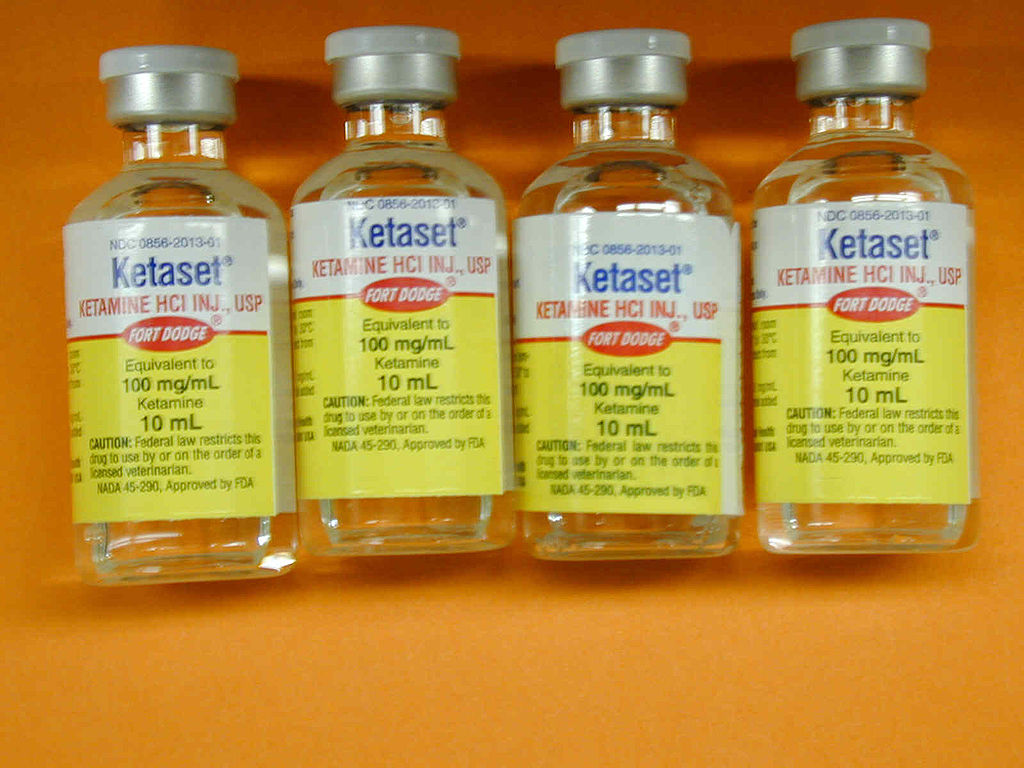I Would Not Be Alive Without Dr. Tennant
/(Editor’s note: As PNN has reported, last week the DEA raided the home and offices of Dr. Forest Tennant, a prominent pain physician in California. The DEA search warrant alleges that Dr. Tennant is part of a “drug trafficking organization” and prescribes excessive amounts of opioid pain medication. Dr. Tennant treats about 120 patients with intractable chronic pain, including many from out-of-state who can’t get effective treatment elsewhere. Kimberley Comfort is one of them.)
By Kimberley Comfort, Guest Columnist
My Dad searched the country for help for me, as I have spent my life since September 2010 in 24/7 intractable pain. I ended up having two major surgeries trying to help. None helped with the severe intractable pain.
My Dad finally found Dr. Tennant and flew me on three plane seats, while he sat in another row, so I could remain laying down to reach California in January 2014.
Dr. Tennant saw me for over 12 hours in two hour sections in the morning and afternoon. He was essentially a charity. It was 12 hours of full one-on-one attention for $100. He did extensive examinations, blood tests, a genetic test, and trying out different very mild exercises once he diagnosed my adhesive arachnoiditis. He explained some treatments that might help if I ever had my spinal cord stimulator removed.
KIMBERLEY COMFORT
Dr. Tennant did prescribe me some additional opioid medication, while awaiting the results from genetic testing, along with vitamins, minerals, anti-inflammatory drugs, and a water reduction pill that mainly concentrated on the spine.
He agreed that I try a drug combination from a doctor in France that my Dad had researched and spoken with. Opioids were Dr. Tennant's last choice and high dose opioids were for those who metabolized the opioids much too fast.
Dr. Tennant thought I should return monthly, but we explained that the flight was just way too much for me to handle. So Dr. Tennant explained that palliative care was all that remained. He wrote letters to my pharmacy in Florida explaining my disease and why I was requiring such high amounts of opioids. He wrote my primary care provider and explained everything to him, offering to help in any way he could.
Dr. Tennant had recommended injectable Dilaudid, but my doctor would not give me that. Instead, it took him another 15 months and 4 different opioids to get me to a point where I was not in intractable pain 24/7.
I would not be alive today if it were not for Dr. Tennant. There is no way I could or would survive the pain I have without my high dosage of opioids. The genetic test showed I was a very fast metabolizer of opioids.
I have suffered with pain since I was a teenager. Even back then, I was given opioids with Valium. My primary care provider still gives them to me today. If a doctor told me my liver was dying and they needed to cut back on my opioids, my answer would be the same now at age 52, as it was at 16. I would much prefer a shortened life with manageable pain than to live a long torturous life with intractable pain. Frankly, I believe my heart would give out if I faced intractable pain again 24/7.
The opioid doses that the CDC recommends are far less then I have been on since the day adhesive arachnoiditis hit me like a Mack truck.
As for the money Dr. Tennant received from Insys Therapeutics, it is very little compared to some doctors. Doctors often get paid for speaking, get free lunches for the staff and themselves, and airfare to conferences where they will speak. Dr. Tennant is far from the only doctor to do this.
One can go online to ProPublica’s Dollars for Docs and see how much your internist, orthopedic surgeon, neurologist, etc. got from pharmaceutical and medical device companies. It shows that from 2013 to 2015, Dr. Tennant received $127,000.
Compare that to the highest paid doctor. Dr. Roger Jackson, an orthopedic spine surgeon, was paid $54,100,000 during that same time period.
DR. FOREST TENNANT
Dr. Tennant basically works for nothing. You should see how hard and long he works, speaks to educate doctors, and does research to help those of us who would very likely be dead if not for him. To me, Dr. Tennant is a saint!
The DEA should be going to Dr. Tennant, not to raid his offices, but to learn from him. My understanding of U.S. medicine is that a doctor had to be a Doctor of Public Health (DPH), as Dr. Tennant is, to have prescribed pain medication back in the 1960’s. Dr. Tennant was sent the worst of the worst pain patients back then, when “learning to live with it” was impossible for severely injured patients. Pain patients from all walks of life were referred to him for help that the other doctors could not give.
Dr. Tennant is far more educated than most any doctor left today, except perhaps other DPH doctors who have kept up with the times. In my Dad’s research, we found no other doctor specializing in intractable pain. Dr. Tennant has more than 35 years of prescribing pain medication under his belt. He knows what works and what doesn’t. He is the doctor the DEA and the Department of Justice should be calling as an expert witness in the treatment of pain, not going after.
This is nothing more than a smear campaign to try to ruin Dr. Tennant. All these government agencies, Physicians for Responsible Opioid Prescribing (PROP), and the news media have mixed up illicit drug use with needed intractable and chronic pain relief. They are mixing apples with oranges. Pain patients do NOT get a high from opioids. If we are lucky, we get some relief. Some get more relief than others and can go back to living a fairly normal life with opioids.
The crackdown on pain medication isn’t going to stop an addict from looking for that next high. Overdoses will continue even if the DEA, FDA, CDC and DOJ totally eliminate opioid medication. People will find something else to get high with and we will still have overdoses.
The intractable pain patient who has followed the law and their prescription directions will never get high and will, if they’re lucky, be able to have some semblance of a life. Take away their opioid medication and you will murder these people by forcing them to take their own life or waiting until their body fails from the extreme stress of the pain. Our blood will be forever on your hands.
You are trying so hard to take down any doctor who follows the Hippocratic Oath they took to render care to those who need it. You are too ignorant to not recognize the bad science used by the greedy doctors trying to get more money for rehabilitating illicit drug users. You fail to listen to the experts in the treatment of pain and instead only care about the treatment of addicts.
We, the intractable and chronic pain patients, need and depend on the assistance of the few remaining doctors willing to help. Let Dr. Tennant continue to be the highly educated pain doctor he is. Let him continue to help us stay alive and be with our loved ones.
We all are suffering, some worse than others. Without Dr. Tennant and those good doctors you have already tossed to the curb or worse, you will be responsible for our screams of pain and our forced intentional suicides. It will be murder by proxy.
Kimberly Comfort lives in Florida.
Pain News Network invites other readers to share their stories with us. Send them to: editor@PainNewsNetwork.org.
The information in this column should not be considered as professional medical advice, diagnosis or treatment. It is for informational purposes only and represents the author’s opinions alone. It does not inherently express or reflect the views, opinions and/or positions of Pain News Network.
Dr. Tennant and the Tennant Foundation have given financial support to Pain News Network and are currently sponsoring PNN’s Patient Resources section.








































